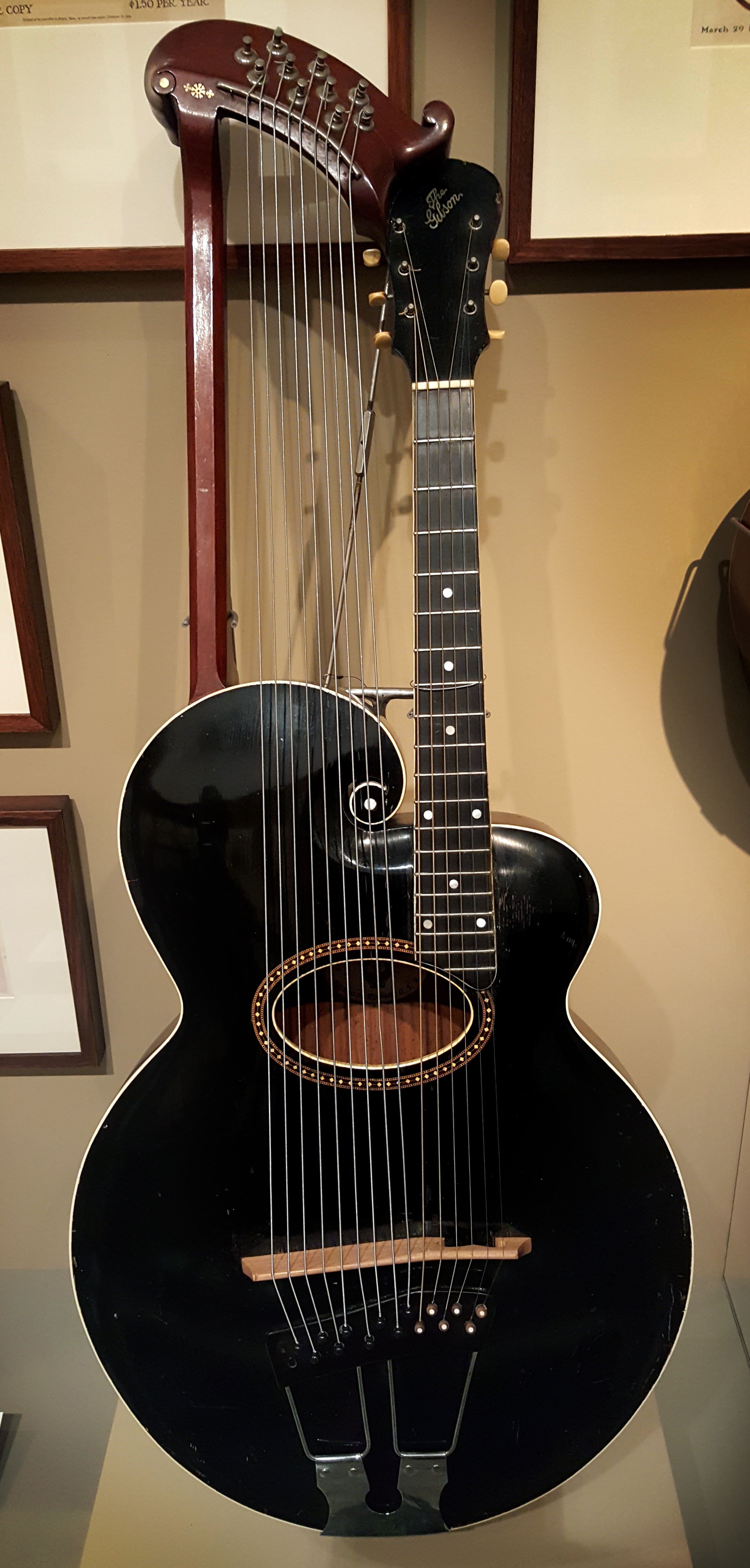From the Collection February 2017
Orville model Harp Guitar made by Gibson, 1910s. Currently on loan to the Grainger Museum from a private collector.
The Grainger Museum’s collection comprises an astounding variety of musical instruments from around the world, from small folk instruments such as ocarinas and whistles, to large and sophisticated instruments such as harmoniums, reproducing pianos, and even Grainger’s own giant hand-made experimental instruments. Some instruments in our collection were even purchased by the Museum after Grainger’s death, including a fascinating set of experimental instruments made entirely of leather by the late Tasmanian artist Garry Greenwood.

This instrument, however, is not part of the Grainger Museum’s permanent collection. On loan to the Museum from a private collector, it forms part of a unique collection of rare instruments that document the many evolving traditions of plucked string instrument playing leading up to the Interwar period. These fascinating instruments may be viewed in the Grainger Museum, forming part of our current exhibition, Instrument of Change: Visions of the Guitar in the Early 20th Century.
Comprising a standard fretted six-string guitar neck coupled with an array of nine open-tuned bass strings, this Orville model Harp Guitar made by Gibson (Michigan, USA) in the 1910s represents one of a number of styles of similar instruments whose development dates back to at least the early 19th century, before enjoying a brief period of relative popularity coinciding with their mass production around the 1900s and 1910s. Due to their large hollow bodies, Harp Guitars had a tonal projection that surpassed the abilities of regular guitars, lutes and mandolins, which up until this period formed the backbone of many musical styles more suited to intimate performances.
Eminently suited to the more popular and ‘showy’ styles of contemporary music at this time, Harp Guitars found favour among stage artists performing in styles such as Vaudeville and Ragtime, who benefitted from the instrument’s strong sound projection in the years before electric amplification of live music became widely used. Their novel form and the complicated technique required for playing them also contributed to their appeal in such settings.
- Jon Drews, Client Services Officer, Grainger Museum.
Image: Gibson Harp Guitar, c. 1910, Orville model. On loan from a private collector.